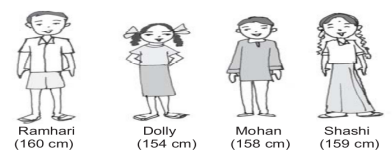Difference between revisions of "Number System"
CHaitra BS (talk | contribs) m (→Activities) |
|||
| Line 18: | Line 18: | ||
Watch the following video on the story of how numbers evolved. The video called Story of One tells how numbers evolved and the initial questions around number theory.<br> | Watch the following video on the story of how numbers evolved. The video called Story of One tells how numbers evolved and the initial questions around number theory.<br> | ||
| − | {{#widget:YouTube|id= | + | {{#widget:YouTube|id=jrLQW1vQklE}} |
This video is related to number system, helps to know the basic information about number system | This video is related to number system, helps to know the basic information about number system | ||
Revision as of 05:57, 24 May 2019
- Back to Mathematics Portal
- Back to Topics in School Mathematics
- Resource Creation Checklist - for guidelines on how to add resources.
Concept Map
Textbook
To add textbook links, please follow these instructions to: (Click to create the subpage)
Additional Information
Useful websites
Watch the following video on the story of how numbers evolved. The video called Story of One tells how numbers evolved and the initial questions around number theory.
This video is related to number system, helps to know the basic information about number system
Reference Books
Teaching Outlines
Concept #1 - History of Numbers: Level 0
Learning objectives
- What is the story of numbers?
- How did counting begin and learning distinguish between the quantity 2 and the number 2.
- The number "2" is an abstraction of the quantity
Notes for teachers
These are short notes that the teacher wants to share about the concept, any locally relevant information, specific instructions on what kind of methodology used and common misconceptions/mistakes.
Activities
- Activity Template
- Activity 1
Concept #2 Number Sense and Counting : Level 0
Objectives
1. Understand that there is an aspect of quantity that we can develop with disparate objects
2. Comparison and mapping of quantities (more or less or equal)
3. Representation of quantity by numbers and learning the abstraction that “2 represents quantity 2 of a given thing”
4. Numbers also have an ordinal value – that of ordering and that is different from the representation aspect of numbers
5. Expression of quantities and manipulation of quantities (operations) symbolically
6. Recognizing the quantity represented by numerals and discovering how one number is related to another number
7. This number representation is continuous.
Notes for teachers
This is not one period – but a lesson topic. There could be a few more lessons in this section. For example, for representing collections and making a distinction between 1 apple and a dozen apples. This idea could be explained later to develop fractions. Another activity that can also be used to talk of units of measure. Addition and subtraction have been discussed here – extend this to include multiplication and division).
Activities
- Activity 1 - Quantity and Numbers
- Activity 2 - The Eighth Donkey Story
- Activity 3 - Cardinal and Ordinal Numbers
Concept #3 The Number Line :Level 1-2
Objectives
- Numbers can be represented on a continuum called a number line
- Number line is a representation; geometric model of all numbers
- Mathematical operations can b explained by moving along the number line
Notes for teachers
Introduce the number line as a concept by itself as well as a method to count, measure and perform arithmetic operations by moving along the number line through different activities.
Activities
- Activity 1 - To introduce Number line
- Activity 2 - Sum of numbers
- Activity 3 - Classroom number line
Concept #4 Number Bases
Learning objectives
Notes for teachers
These are short notes that the teacher wants to share about the concept, any locally relevant information, specific instructions on what kind of methodology used and common misconceptions/mistakes.
Activities
- Activity 1 - Activity-1
- Activity 2 - Activity-2
Concept #5 Place Value
Learning objectives
Notes for teachers
These are short notes that the teacher wants to share about the concept, any locally relevant information, specific instructions on what kind of methodology used and common misconceptions/mistakes.
Activities
- Activity 1 Activity-1
- Activity 2 Activity-2
Concept #6 Negative numbers are the opposite of positive numbers -
Objectives
- To extend the understanding and skill of representing symbolically numbers and manipulating them.
- To understand that negative numbers are numbers that are created to explain situations in such a way that mathematical operations hold
- To recognize that negative numbers are opposite of positive numbers; the rules of working with negative numbers are opposite to that of working with positive numbers
- Together, the negative numbers and positive numbers form one continuous number line
- Perform manipulations with negative numbers and express symbolically situations involving negative numbers
Notes for teachers
Negative numbers are to be introduced as a type of number; they do the opposite of what positive numbers do.
Read the activity for more detailed description.
Activities
- Activity 1 -What are negative numbers
Assessment activities
I Fill number line (1 period)
Draw these one below the other
1,2,.......
10,20,.......
100, 200,.....
II Tell stories and Play With Number Systems (1 period - optional)
http://www.math.wichita.edu/history/topics/num-sys.html#sense
(This page is downloaded and given as reading materials – page is called Number Systems)
III Questions/ activities for class
- Arrange in order – shortest, tallest, increasing and decreasing order
Hints for difficult problems
Project Ideas
Math Fun
Usage
Create a new page and type {{subst:Math-Content}} to use this template
